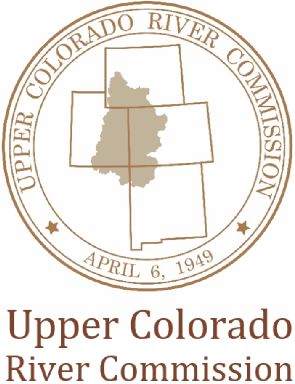Since the 2016 Upper Basin Depletion Demand Schedule was adopted by the Upper Colorado River Commission in 2017, there have been several developments that warrant the need for a substantial update. These developments, along with improved data, have resulted in wholesale modifications to Utah’s schedule beyond those of the other Upper Division States. Notable changes that have informed Utah’s Updated 2016 Schedule include: improvements to the state’s process for collecting Municipal and Industrial (M&I) water use data (January, 2017); establishment of a new state approach to M&I conservation with regional conservation goals (November, 2019); and, a settlement of the Navajo Nation federal reserve water rights in Utah (May, 2022). Differences in Utah’s updated schedule, not attributed to impacts from moving to full agricultural demands, are indicative of better available information, which has led to more refined estimations and projections. Utah’s Updated 2016 Schedule should not be interpreted as a dramatic change to Utah’s water use between 2017 and the present.
Along with the other Upper Division States, Utah has produced an Updated 2016 Depletion Demand Schedule that represents full agricultural demands, which were determined from maximum depletions met for each subarea (Division of Water Resources planning area) between 2007 and 2016. Utah’s process uses a gridded version of Penman-Monteith calibrated with local weather data that is incorporated into a statewide Water Budget Model, which models agricultural depletions based on an irrigation water requirement and other local conditions. Current tribal demands were included in the Agriculture and M&I categories whereas future demands were included in a Tribal Settlement category. The current full demand for the Ute Tribe was set based upon the tribe’s Federal Decreed rights (March, 1923) and Certificated Rights for the Uintah Indian Irrigation Project, with the tribe’s projected demand based upon the depletion apportioned under the 2018 Ute Indian Water Compact. Navajo current agricultural demand was calculated using the same 2007-2016 maximum depletion method described above, and the projected demand was determined from the 2018 Ten Tribes Partnership Tribal Water Study.
For the Updated 2016 Schedule, M&I demand estimates were derived using county-level regional conservation goals and the most current population forecasts for public water supplier systems. Self-Supplied Industry (SSI) demands, reported to the Division of Water Rights, were included within the M&I sector and Energy-related SSI data were used to inform current Energy sector demands. Projected Energy demands are not adjusted into the future, and the uncertainty of increases and decreases are considered equivalent. Current Export demands were evaluated as an average (2007-2016) because they have been relatively stable and because a shortage method has not yet been determined for Utah Exports in CRSS. Projected Export demands were derived from updated demand schedules obtained from individual water suppliers. Finally, In-State Reservoir Evaporation was determined by multiplying reservoir surface area by an average gridded evaporation rate (Penman) specific to each reservoir. An adjustment factor was applied to account for partial storage. Overall, moving to full agricultural demands increased Utah’s agricultural category in the schedule by an average of 21% (133 KAF) over the projected period. Implementing all changes (full agricultural demands and other sector demand modifications) resulted in a 12% average increase (129KAF) to Utah’s demand totals over the projected period.
